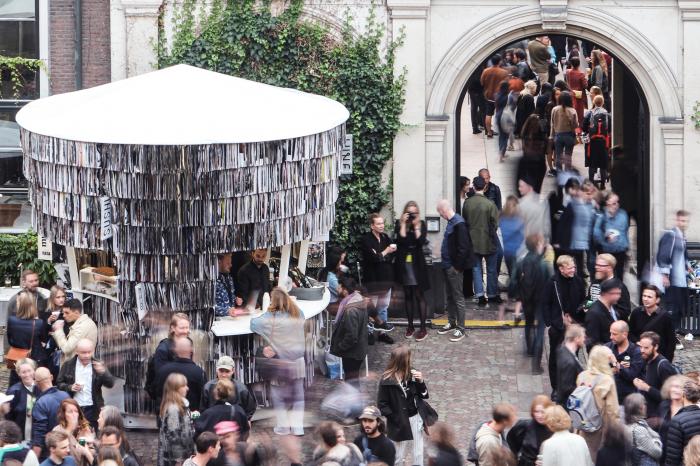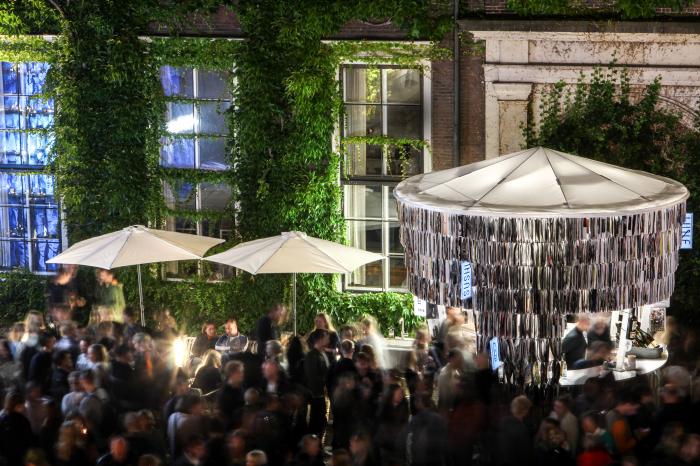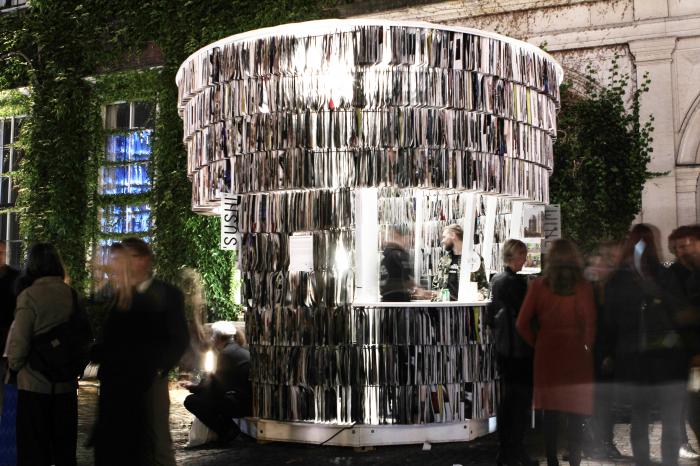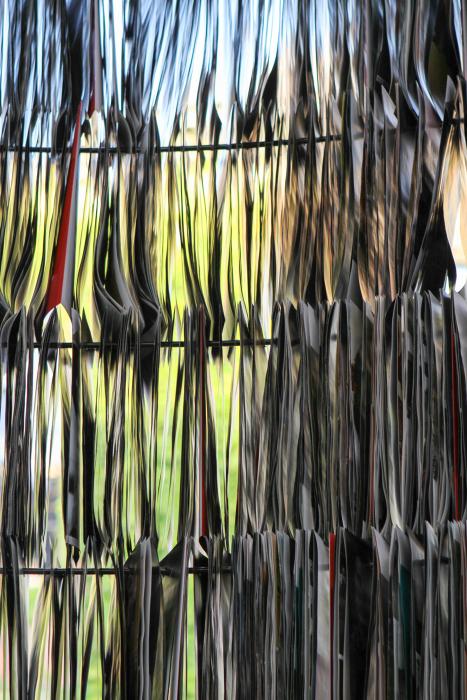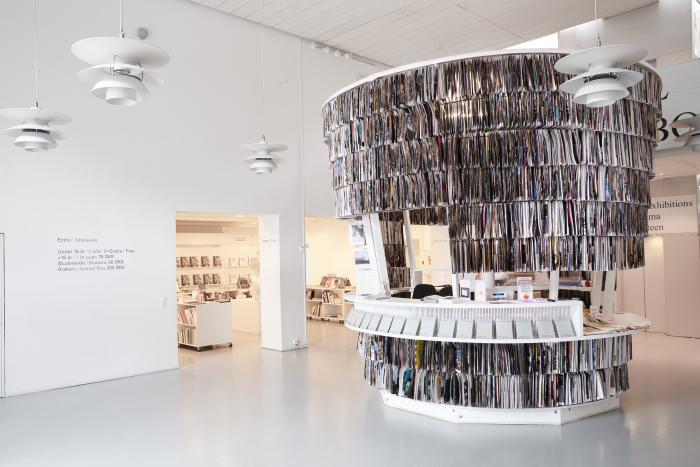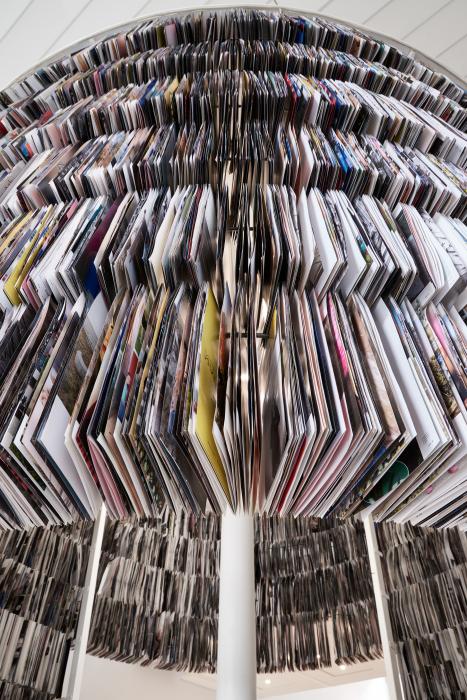I. SUMMARY INFORMATION
Project
269287
Status
Submitted
Award category
Techniques, materials and processes for construction and design
You want to submit
NEW EUROPEAN BAUHAUS AWARDS : existing completed examples
Project title
Paper Pavilion
Full project title
Paper Pavilion / The pavilion designed with new sustainable design method: Appropriate Durability
Description
Paper Pavilion is designed with upcycled wasted papers to develop the new sustainable design method of “appropriate durability”: not to set up excessive architectural strength to a short-life pavilion but rather construct with appropriate materials that only last for the duration of an event. The pavilion was originally created for Copenhagen Art Fair (CHART) and it was redesigned and relocated permanently to Kunsthal Charlottenborg Museum locates in the heart of Copenhagen.
Where was your project implemented in the EU?
Denmark
Copenhagen
Kunsthal Charlottenborg, Kongens Nytorv 1
55.679839288898606
12.588294728203794
Copenhagen
1050
When was your project implemented?
Has your project benefited from EU programmes or funds?
No
Which programme(s) or fund(s)? Provide the name of the programme(s)/fund(s), the strand/action line as relevant and the year.
II. DESCRIPTION OF THE PROJECT
Please provide a summary of your project
Paper Pavilion is designed with up-cycled waste paper in order to develop a new sustainable design method of “Appropriate Durability”. The pavilion was originally created for Copenhagen Art Fair (CHART), and was later redesigned and relocated permanently to Kunsthal Charlottenborg Museum, located in the heart of Copenhagen.
The fifth edition of CHART sought pavilion designs that were in line with notions of sustainable construction and fabrication methods, urbanisation and up-cycled material design. PAN- PROJECTS proposed an “appropriate durability” as a new sustainable design method; that is, not to set up an excessive architectural strength for the pavilion, but rather to prioritise constructing with materials that would only last for the duration of the event. In this way, the proposal uses paper as an appropriate architectural material, as something suitable to building a pavilion intended to only last for a three day event. Not only is paper 100% recyclable, but it is also strong, making it an exceptional material for such a short term function. It provides a certain uniqueness to the Paper Pavilion, indicating a new potential of sustainable design methods.
A bagworm was the initial inspiration for this design. A little creature that creates its nest by collecting found, surrounding materials, it unknowingly communicates the character of its habitat. Similarly, Paper Pavilion wraps itself with papers collected from the city; showcasing the citizens activities and reflecting the reality of their vivid, urban lives on its facade. The use of paper as a building material makes the architecture playful, and the paper facade creates unique interactions with the visitors. The papers used for the pavilion are recycled in their usage for the design, and can then be recycled afterwards as usual.
The Paper Pavilion proved to be a success at the Copenhagen Art Fair, and the pavilion is then relocated permanently to the Kunsthal Charlottenborg Museum’s entrance hall.
Please give information about the key objectives of your project in terms of sustainability and how these have been met
Paper Pavilion is designed with up-cycled waste paper in order to develop a new sustainable design method of “Appropriate Durability” for those pavilions with short lives.
Appropriate Durability suggests architects to design short life architectures such as pavilions for events with appropriate materials that last only for the duration of its life. With this method, architects are encouraged to seek the new possibilities in uncommon materials for architectures.
Instead of using common architectural materials such as wood. steel or concrete that are supposed to last for long life, appropriate durability is to explore new material possibilities that are not used in ordinary building projects. In this way, the method opens up the opportunity to use fragile but more sustainable materials which are not seen as architectural materials in ordinary condition as they won't last for long but potentially make the buildings more sustainable.
With the example of Paper Pavilion, the proposal uses paper as an appropriate architectural material, as something suitable to building a pavilion intended to only last for a three day event. Not only is paper 100% recyclable, but it is also strong, making it an exceptional material for such a short term function. It provides a certain uniqueness to the Paper Pavilion, indicating a new potential of sustainable design methods.
Please give information about the key objectives of your project in terms of aesthetics and quality of experience beyond functionality and how these have been met
Appropriate Durability encourages architects to explore new material possibilities that are not in common for other ordinary building projects. The use of new materials also means the architects to develop unique and new construction details such as material handlings and construction strategy. With those original ideas from materials to construction, the project will be unique existence that no one has seen before.
In case of Paper Pavilion, the pavilion is made with the used papers that are collected from across the city of Copenhagen thus showcasing urban activities on its facade. The idea came from the theme of the CHART art fair that our studio was asked to celebrate the vivid urban activities while developing the new sustainable concept.
A bagworm was the initial inspiration for this design. A little creature that creates its nest by collecting found, surrounding materials, it unknowingly communicates the character of its habitat. Similarly, Paper Pavilion wraps itself with papers collected from the city; showcasing the citizens activities and reflecting the reality of their vivid, urban lives on its facade. The use of paper as a building material makes the architecture playful, and the paper facade creates unique interactions with the visitors. The papers used for the pavilion are recycled in their usage for the design, and can then be recycled afterwards as usual.
Please give information about the key objectives of your project in terms of inclusion and how these have been met
Paper Pavilion celebrates the vivid urban activities of citizens of Copenhagen by showcasing their lives on its facade.
The papers are informative objects that reflects the activities of people living in the city. Our studio decided to use upcycled papers that are collected from the city and showcase them on its facade in order to celebrate the people of Copenhagen.
The process of paper collection started from asking friends and related organisations to donate their wasted papers for the project. Due to the amount of papers it needed, we had to make an open call to the public for asking paper donations which ended up surprisingly successful that we were able to collect more than eighty thousands papers. Each paper reflects different and diverse activities that the facade of pavilion suddenly became informative surface where visitors of the art fair can understand what the city of Copenhagen is actually like.
This urban showcase was only possible to be created by using upcycled papers that reflects the real lives of people.
This new playful character of architecture and materials is one of the greatest potential that Appropriate Durability can create.
Please give information on the results/impacts achieved by your project in relation to the category you apply for
Paper Pavilion was well received by the public and diverse medias that the pavilion became an outstanding icon of sustainable architecture.
The method and the way of design thinking of Appropriate Durability was introduced as one of the new sustainable design methodology through global medias. We believe the development of the idea of Appropriate Durability is the greatest achievements of the project of Paper Pavilion that changed the limit of architectural materials and enabled all architects to address the new material possibilities.
Not only the media publications but our studio is constantly receiving commissions asking to implement the same concept as Paper Pavilion to different places across the world.
Just after the CHART art fair, the pavilion was bought and relocated permanently to the Kunsthal Charlottenborg Museum’s entrance hall. The director of the museum has decided to purchase the pavilion because of not only its sustainable character but also because of it represents the city of Copenhagen by its facade.
Paper Pavilion has been selected as an emerging concept of sustainable architecture and our studio is invited to the exhibition of Young European Architects (YEA!) exhibition at Venice Biennale 2021 and the project received honorable mentions.
We were also invited to the Seoul Biennale of Architecture and Urbanism 2021 to build the Paper Pavilion. (However, we had to cancel the offer due to the global pandemic.)
The idea of the pavilion was not only featured by architectural scenes but also in the field of arts and sustainable future thinking. This coming summer, our studio is invited to the National Art Center of Tokyo to create an art piece which has the same concept but double the size. The project will upcycles the unused pamphlets collected from museums across Japan which pamphlets were not used as the exhibitions were canceled due to the pandemic and national lockdowns.
Please explain the way citizens benefiting from or affected by the project and civil society have been involved in the project and what has been the impact of this involvement on the project
Paper Pavilion is made with upcycpled papers that are donated by the citizens of Copenhagen.
The papers reflect vivid urban activities of every individuals which are then expressed on the facade of the pavilion.
This showcase of urban activities well represents the city of Copenhagen that the visitors of the art fair can find the real lives of people much better than they can find as mere information.
The project has started from collecting the papers, making open calls to the general public and the citizens responded and donated their papers.
The process generated the real quality which made it possible the pavilion to be the literally the pavilion of urban collective.
Please highlight the innovative character of the project
The most innovative character of Paper Pavilion and the Appropriate Durability is that the way it treats the materials.
It opens up the possibility of those objects that were not considered as architectural materials as the stereo types of building materials had to be highly durable. This existing notion of building materials had been limiting the way of architectures and many potential materials were ignored such as used papers for the case of Paper Pavilion.
Appropriate Durability suggests to use the appropriate materials that only lasts for the life of architecture, event though those materials are not traditionally used in the field of architectures. If this idea became common, it can open up much more possibilities in term of sustainable architectures.
Paper Pavilion is one of the great example that has been developed with the method of appropriate durability.
We believe this methodology is highly applicable to many different contemporary situations and we hope this idea will change the tendency of the way of pup-up short life buildings into more sustainable way.
Please explain how the project led to results or learnings which could be transferred to other interested parties
Paper Pavilion well represented the potential of the new sustainable method of Appropriate Durability.
Paper Pavilion upcycled used papers but it could be any different materials if the context of the pavilion was different.
The lessons from this project is that there is precious possibilities of alternative materials in the field of architecture.
The fragile materials that has never been counted as building materials are good example of new architectural materials that are more sustainable to use and highly recyclable.
In order to create sustainable architecture for the future of our living world, architects must reconsider the durability of their projects and choose the alternative materials that are appropriate for their lives of the projects.
And we believe, Paper Pavilion tells the potential of the method and how we can tackle reconsidering and developing the building strategy with new material.
Is an evaluation report or any relevant independent evaluation source available?
III. UPLOAD PICTURES
IV. VALIDATION
By ticking this box, you declare that all the information provided in this form is factually correct, that the proposed project has not been proposed for the Awards more than once under the same category and that it has not been subject to any type of investigation, which could lead to a financial correction because of irregularities or fraud.
Yes
